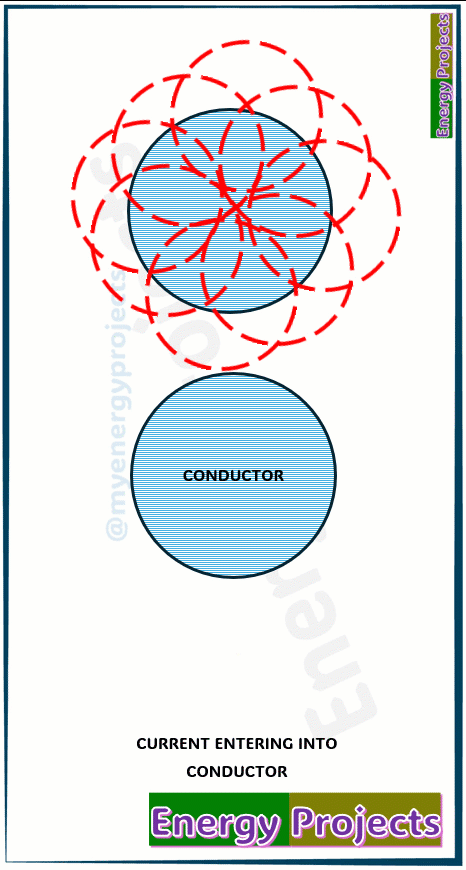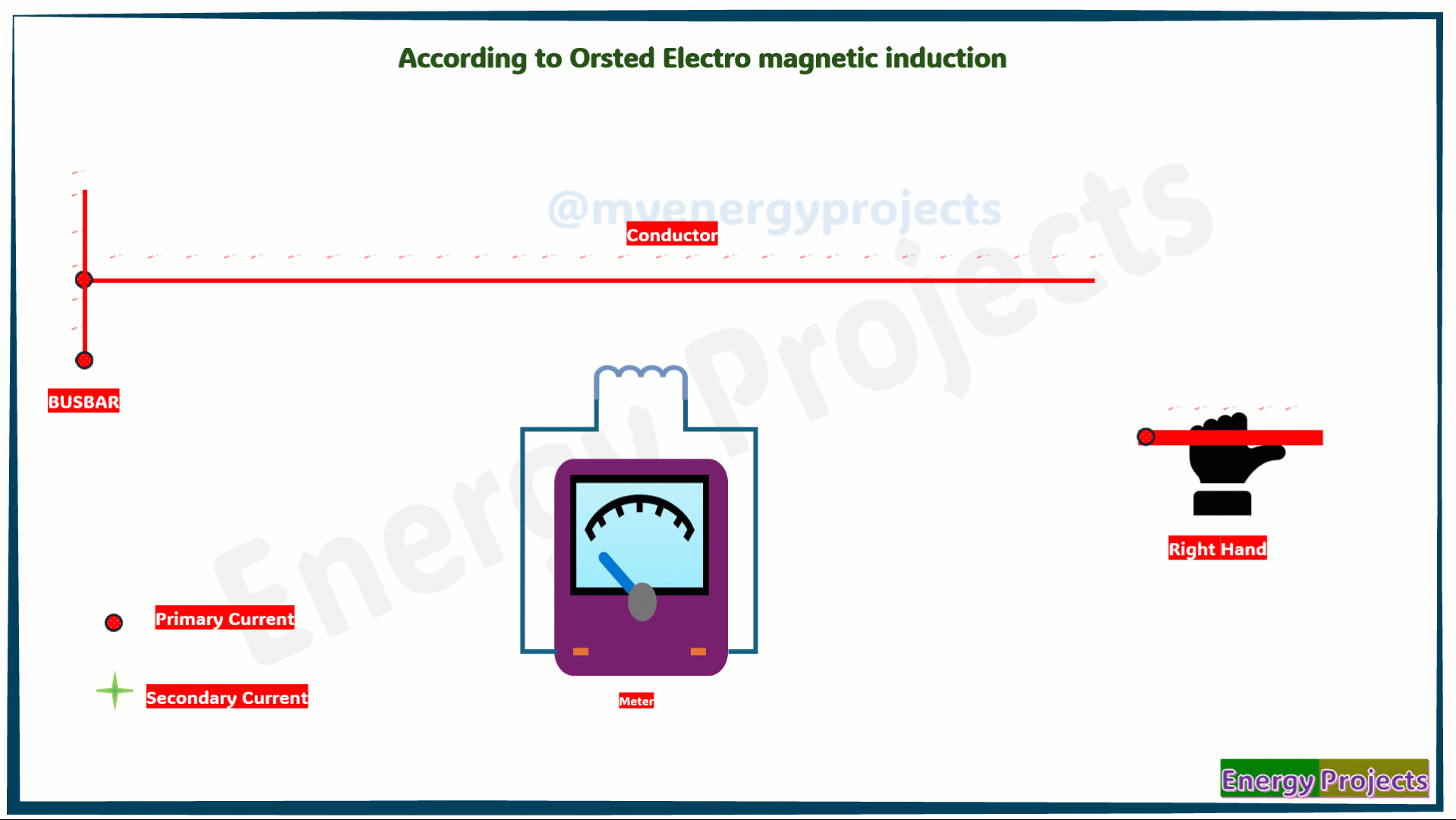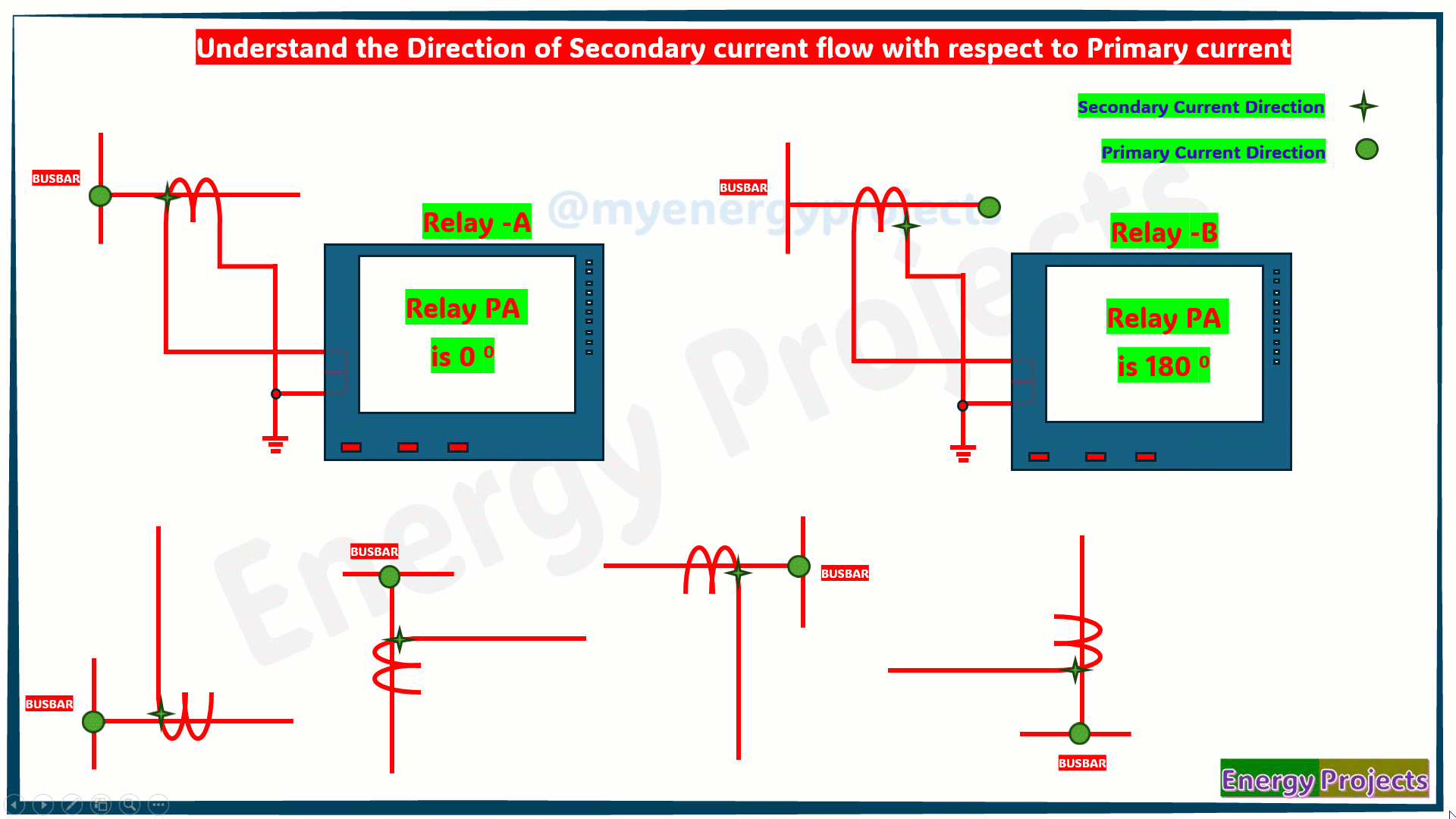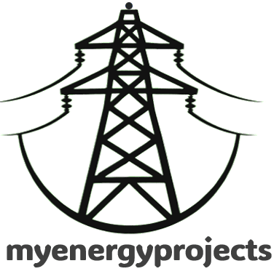09.Direction of Secondary Currents w.r.t Primary currents
According to Orsted magnetic induction :
when current flows through a conductor, magnetic flux lines (or magnetic field) are produced around it. it was first discovered and stated by Hans Christian Orsted in 1820. Hans Christian Orsted, a Danish physicist and chemist.
Where the current direction from left to right , the Flux produced anti clock wise direction. You can see the representation right to the picture.


Single Busbar Configuration
Single Busbar with Bus section Configuration
Single Busbar with Transfer busbar configuration
Single Busbar with Bus section + Transfer bus coupler + Section Isolator configuration
Double Busbar with Bus coupler Configuration
Double Busbar with Bus coupler + Bypass Isolator Configuration
Double Busbar with Bus coupler + Transfer Buscoupler configuration
Mesh Busbar configuration
One and Half Breaker Busbar Configuration
More
Relay A:
In Relay A, the current flows from the transmission line to the busbar. The CT (Current Transformer) star point is connected towards the protected line.
You can observe the direction of the secondary currents with respect to the primary currents:
For the R phase, the current is entering the relay, and the relay considers this as 0 degrees.
For the Y phase, the relay reads 240 degrees.
For the B phase, it reads 120 degrees — all in an anti-clockwise direction.
Relay B:
In Relay B, the current also flows from the transmission line to the busbar, and the CT star point is similarly connected towards the protected line.
Here, you can see the direction of the secondary currents with respect to the primary currents:
For the R phase, the current is leaving the relay, and the relay reads 180 degrees.
For the Y phase, it reads 60 degrees.
For the B phase, it reads 300 degrees — again in an anti-clockwise direction.
The representations below Four illustrate how the direction of secondary currents is interpreted in relation to the primary current flow, depending on the CT polarity and phase shift.


Applying the Principle in Primary Conductor:
The current is flowing from the Busbar to transmission line . The flux produced by the current carrying conductor.
When you move the secondary coil which is connected to the deflection meter, near to the flux lines the meter deflects to the right direction . The direction of current indicated as below.
Current Direction in CT Secondary with respect to the Primary Currents:


